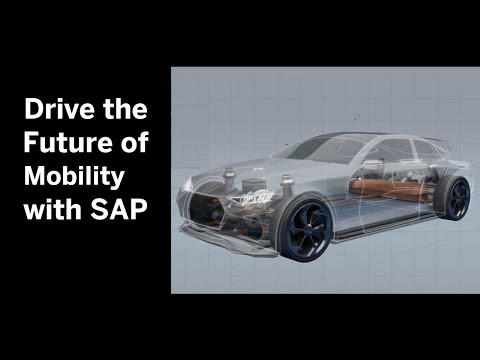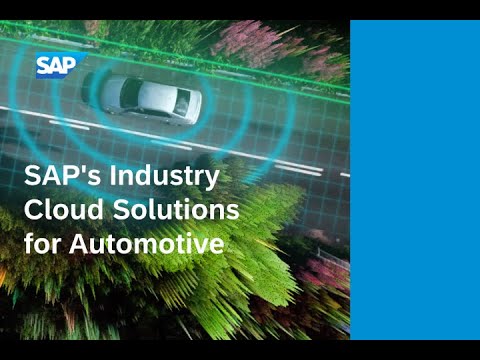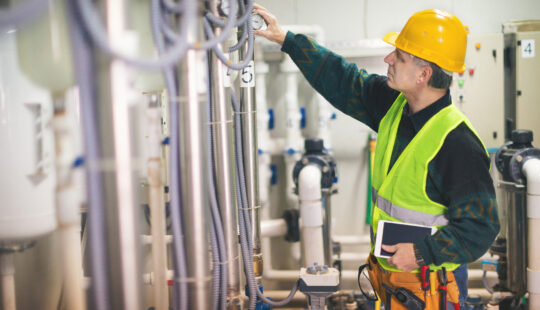What could the future of mobility look like in just 10 years?
Imagine streets populated with electric vehicles (EV) and gas stations replaced by EV charging stations at shopping centers and grocery stores. Mobility-as-a-service (MaaS) dominates the transportation landscape, offering users the most affordable, sustainable, and efficient way to get around. Some cars are self-driving and interconnected, talking to each other and sharing their location and next moves. What’s more, many cars are connected with the ability to send and receive all types of users’ data.
To realize this new reality, change will happen quickly, and regulations will only accelerate this transition. In Europe, a package of legislative proposals, “Fit for 55,” aims to reduce greenhouse gas emissions by 55% by 2030. It includes a policy that requires a 55% reduction of average emissions in new cars by 2030 and a 100% reduction by 2035. In the United States, President Biden set a bold goal that EVs make up at least 50% of all vehicles sold by 2030. Since he took office, automakers announced investments of more than US$36 billion in EV manufacturing and $48 billion in battery production in the U.S. alone.
Add consumer sentiment to the equation – more than half of global car buyers are looking for an EV – and it’s no surprise that carmakers, suppliers, and dealerships recognize the need for dynamic and continuous innovation to be profitable and sustainable.

In a world of disrupted supply chains, new market participants, digitized factories, and a growing demand from regulators and consumers for sustainable vehicles, automotive businesses are embracing the following five trends to stay competitive.
1. Shifting Gears to Electric
A massive shift to vehicle electrification will require efficient and scalable EV charging infrastructure, ideally on one platform with seamless integration into existing business systems used by automakers, suppliers, and dealerships. It will also change supply chains and the role of parts suppliers as they shift from providing components needed for internal combustion engines to those needed for EVs. To prepare for vehicle electrification, automakers and suppliers can leverage the power of technology to manage charge point infrastructure and interact along the mobility value chain in the cloud to support collaborative, end-to-end business models and processes.
SAP customer ChargeX provided the first intelligent, multi-socket charging solution for EVs. It allows multiple electric cars to charge simultaneously. The SAP E-Mobility solution helped ChargeX lower time spent on daily charge-point operations and improve customer satisfaction with intuitive user interface and straightforward, automated processes.
2. Making Cars Smarter
Cars are the next smartphones. As consumers increasingly expect more from their vehicles, automobile manufacturers must find ways to continually enhance vehicle intelligence and connectivity.
Even in the 2020s, software reshapes how drivers interact with their cars. Automation has taken over braking, climate control, cruise control, entertainment, and more. Routine software updates bring drivers continuous improvements, adding safety features, better performance, and greater efficiency.
Fully autonomous driving, currently in its infancy, continues to learn and will soon become a common feature. Like vehicle electrification, regulatory requirements and consumer behavior inspire companies to develop innovative solutions that push the boundaries of automotive capabilities.
One company, Zoox, uses flexible and scalable manufacturing solutions from SAP to build its fully autonomous, purpose-built vehicle fleet.
3. Considering Mobility-as-a-Service
An uptick in technology-powered smart cities – spurred by our response to the effects of climate change – will force auto manufacturers and suppliers to rethink their business models. Communities will reimagine fundamental public services, including transportation, encouraging citizens to swap their vehicles for public and shared transportation services. In fact, by 2030, the shared mobility market is expected to exceed $1.9 trillion.
Mobility-as-a-service platforms offer users an integrated package of transportation options accessible through a single payment channel. These implementations will play a fundamental role in solving urban challenges, reducing congestion, greenhouse gas emissions, and accessibility constraints. Car manufacturers and suppliers can rethink and innovate their product offerings through this modality.
Take the robotaxi by Zoox. Passengers request a ride from this driverless taxicab via their smartphones. Zoox robotaxis go up to 75 miles per hour, revolutionizing ridesharing. The SAP Manufacturing Execution application provides the backbone for the robotaxi production.

4. Prioritizing Operational Resilience
Amid the evolving automotive landscape, automakers and suppliers must ensure resilient supply chains are in place to meet changing demand, including increasing requests for EV components, while combating battery and chip shortages. The disruption caused by COVID-19 and the war in Ukraine highlighted the threat external events can have on automotive industry operations. Technology will play an even more critical role in enabling businesses to respond to potential supply chain disruptions.
Real-time tracking and analysis can better forecast supply and demand, fostering a more agile and resilient supply chain. As a result, carmakers, suppliers, and dealerships can respond to the unexpected as soon as it happens, make better inventory management decisions, and reduce waste.
Electric motorcycle company Zero Motorcycles and German multinational manufacturer of EVs and motorcycles BMW teamed up with SAP to succeed in the new world of mobility. With real-time information, detailed insights on performance, and analytics to improve decision-making across the manufacturing value chain, Zero Motorcycles and BMW can achieve operational resilience while pushing the boundaries of innovation.
5. Embracing Digital Retail
Due to consumer behavior change accelerated by the pandemic, the automobile industry recognizes the urgent need to adopt a digital-first, omnichannel sales strategy. Car buyers and sellers have started turning to contactless car buying and online dealerships. And even as the world recovers from COVID-19, vehicle retailers see automotive e-commerce searches reaching an all-time high as many customers now prefer digital retail experiences for sales, trade-ins, and services.
SAP partner proaxia makes it easier for importers, dealerships, and service locations to adopt digital retail options, optimizing end-to-end sales and service processes. With innovative products for SAP S/4HANA, dealerships and service locations can continue to drive sales, deliver services, and meet shifting customer expectations.
Above All: Collaboration Is Key for Future Success
The automotive industry faces enormous challenges. Despite competition in the automotive industry, automakers and suppliers gain critical value through collaboration, particularly in such a dynamic environment for innovation. Catena-X – as front-runner for the automotive industry – aims to bring all business partners, including multi-tier suppliers, original equipment manufacturers (OEMs), or recycling service providers, into one network to help ensure an open, secure, and interoperable data exchange along the value chain. The transparency of data helps participants gain visibility into the complete material flow of a product life cycle, from “cradle to grave.” Utilizing information available in shared digital twins improves decision making for end-of-life vehicles, thus useful parts can be circulated back for refurbishment or reuse and valuable raw materials can be recycled in a more effective way. With SAP Industry Network for Automotive, SAP can provide software and network services to Catena-X and the automotive industry at large.
Learn how you can manage innovative and complex business models while fueling connected and sustainable automotive businesses that are ready to meet the road ahead with industry cloud solutions from SAP.
Hagen Heubach is global vice president of Automotive Industry Business Unit at SAP.
Kelly Cannon is head of Industry Thought Leadership at SAP.



